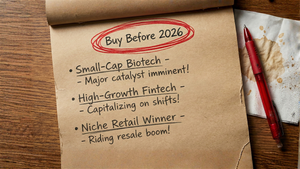Busting the top 5 myths about sustainable investing

Investors who think about aligning their portfolios with sustainable values can be put off by some of the information they have run across about the practice. But some of the top reasons that people may be reluctant to embrace sustainable investing turn out to be nothing but misinformation, Sarah Sung, head of sustainable investing at J.P. Morgan Wealth Management, argues.
In a post on the J.P. Morgan Private Bank website, Sung debunks 5 top myths regarding sustainable investing:
Myth #1: Investing sustainably leads to lower returns and underperformance
“One of the most common misbeliefs surrounding sustainable investing is that it generates lower returns. With years of performance data now available, the numbers show that sustainable strategies often perform in line with — or in some cases, outperform — a traditional benchmark,” Sung wrote.
From April 2014 to March 2024, MSCI ESG Equity Leaders (which focuses on companies with strong ESG scores) delivered higher returns compared to the broader MSCI World Index.
Sung cited two reasons sustainable investing can continue to deliver:
- Extensive data, corporate disclosure and regulatory report on environmental, social, and governance issues give investors new insights into how well companies are managing risk. When done right, a focus on key ESG issues can potentially lower investment risk. Financially material ESG factors such as human capital management and land use could have significant effects — both positive and negative — on a company’s business model and value drivers.
- Megatrends are powerful influences that can affect the economy and society. A relevant example is the clean energy transition, which includes wind and solar, smart grids and energy storage. Identifying and investing in these megatrends may provide long-term growth opportunities as these trends reshape the market.
Myth #2: Sustainable investing doesn’t drive real change
“Companies often have a global influence, sometimes for the better (e.g., by being a good employer) and sometimes for the worse (e.g., by polluting a local ecosystem). It’s possible to sponsor specific causes through your investments and potentially impact company behavior,” she wrote.
You can also invest in funds with managers who follow active strategies that engage directly with companies to drive positive change over time. She cited one example of a fund manager who advocated for more decarbonization efforts at a major construction materials company, which has adopted more aggressive targets.
Myth #3: Sustainable investing is solely focused on climate
“Climate change and other environmental concerns are a focus for many sustainable investors. However, social and governance issues — the S and G in ESG — are top of mind for clients as well, and they merit consideration in the analysis of companies and funds,” says Sung.
In fact, E, S and G issues are often interrelated. For example, water stress is not only a risk to ecosystems, but it also affects human health and well-being. It can intensify social and political fragilities in emerging economies, such as the Middle East and North Africa (MENAT), the most water-scarce region in the world.
Myth #4: Sustainable investing is a passing fad
“Sustainable investing assets have nearly tripled since 2020 and, despite market volatility, both returns and fund totals have remained stable. The above data shows that global assets under management in sustainable funds are around $3 trillion as of March 2024. These assets have grown at a 27% compound annual rate over the past four years,” Sung wrote.
She said the growth growth will continue due to several factors:
- Shifting investor preferences, particularly among Gen Z and millennials, who prioritize sustainable practices
- Growth in corporate net zero pledges
- Policy and regulatory changes, such as the Sustainable Finance Disclosure Regulation in Europe
- Macro tailwinds, such as the clean energy transition and sustainable technology, which require up to $5 trillion in spending per year and may create continual long-term investment opportunities
Myth #5: I can only apply sustainable investing to a part of my portfolio
“As sustainable investing continues gaining traction, there are many different strategies and asset classes that can be used across a portfolio,” Sung wrote.

She said a total of 153 new sustainable funds have launched since 2022, spanning equities, fixed income and alternative vehicles. There are even sustainable products that focus on specific themes or megatrends, such as health care, climate or inclusivity.
In addition, sustainable investing is also more accessible than ever. Investments minimums have gotten lower over time, allowing for more portfolio flexibility and incremental allocations.
Read more: 5 high-yielding stocks that best reflect the UN’s Sustainable Development Goals
More News
View More




Recent Quotes
View More
Quotes delayed at least 20 minutes.
By accessing this page, you agree to the Privacy Policy and Terms Of Service.